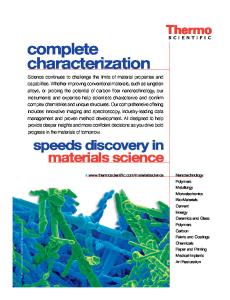Magnetization Dynamics in Two-Dimensional Arrays of Square Microelements
- PDF / 2,904,394 Bytes
- 12 Pages / 612 x 792 pts (letter) Page_size
- 88 Downloads / 289 Views
DISORDER, AND PHASE TRANSITION IN CONDENSED SYSTEM
Magnetization Dynamics in Two-Dimensional Arrays of Square Microelements V. A. Orlova,b,*, R. Yu. Rudenkoa,b, A. V. Kobyakova,b, A. V. Lukyanenkoa,b, P. D. Kima†, V. S. Prokopenkoc, and I. N. Orlovac a Kirensky
Institute of Physics, Siberian Branch, Russian Academy of Sciences, Krasnoyarsk, 660036 Russia b Siberian Federal University, Svobodnyi pr. 79, Krasnoyarsk, 660041 Russia c Astaf’ev Krasnoyarsk State Pedagogical University, ul. Ady Lebedevoi 89, Krasnoyarsk, 660049 Russia *e-mail: [email protected] Received December 11, 2017
Abstract—The collective magnetization motion in an array of magnetostatically interacting ferromagnetic square elements is studied theoretically and experimentally. Dispersion laws are obtained for collective modes for some particular cases of the distribution of the topological charges πT of magnetic vortices in particles. Resonance curves are plotted with allowance for dissipation for various values of πT. An experimental investigation of the ferromagnetic resonance in a two-dimensional array of particles qualitatively supports the calculation results. DOI: 10.1134/S1063776118040118
1. INTRODUCTION Interest in studying nano- and microobjects (nano- and microdots) is related to the prospects of using such materials in ultrahigh-density data storage devices, spintronic devices, and microsurgery. The magnetic properties of individual nanodots and their arrays have important specific features. For example, one such element can hold two bits. One bit can be coded in the sign of polarity p of a magnetic vertex core, and the second bit, in the sign of chirality q. Under certain conditions, the equilibrium magnetization distribution in nanodots is known to be a magnetic vortex with a core, which is a small region having a strongly nonuniform magnetization, at its center. The magnetization direction at the center of the core is perpendicular to the nanodot surface and is characterized by polarity p = ±1, conventionally “up” and “down”. The average core radius can be estimated from the relation δ ≈ A /K eff , where A and Keff are the exchange and surface anisotropy constants, respectively. δ for most soft magnetic materials is several tens of nanometers. Magnetization in a vortex can have a conventional clockwise or counterclockwise direction, which is characterized by the sign of parameter q = ±1. The analytical description of the dynamic properties of nanodots is based on the Landau–Lifshitz– Gilbert equation and its modification proposed by Thiele [1]. The Thiele approach is as follows. In the † Deceased.
presence of magnetization soliton heterogeneity, the equation of magnetization motion is rewritten in terms of collective variables, one of which is the coordinate of the center of the heterogeneity. In this form, Thiele’s equation acquires a non-Newtonian form for the description of a magnetic vortex at a nanodot [2]. In an ac field, the core of a magnetic soliton is involved in complex motion under the action of a gyroforce [3– 6]. It
Data Loading...











